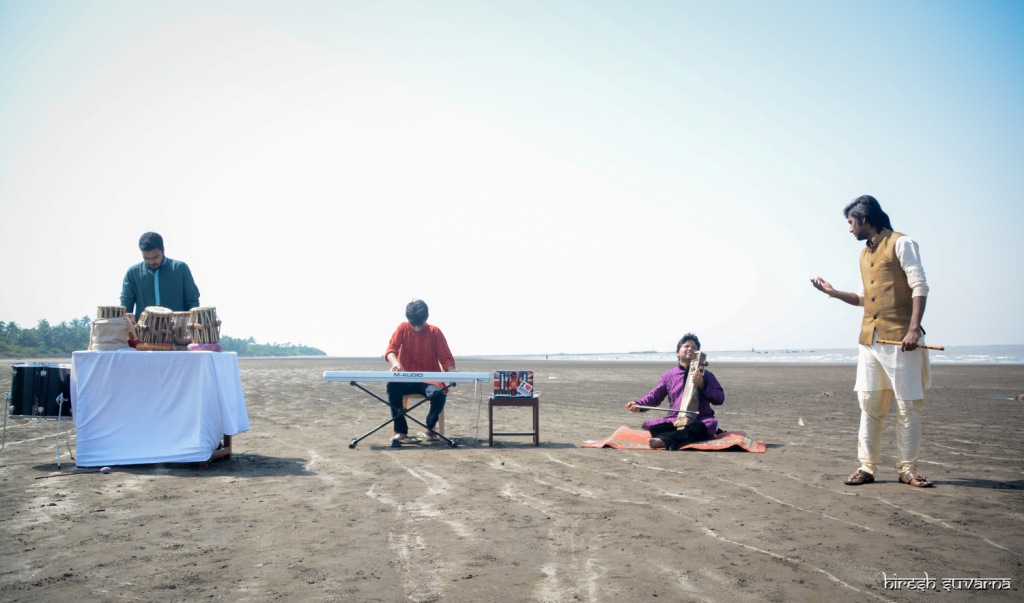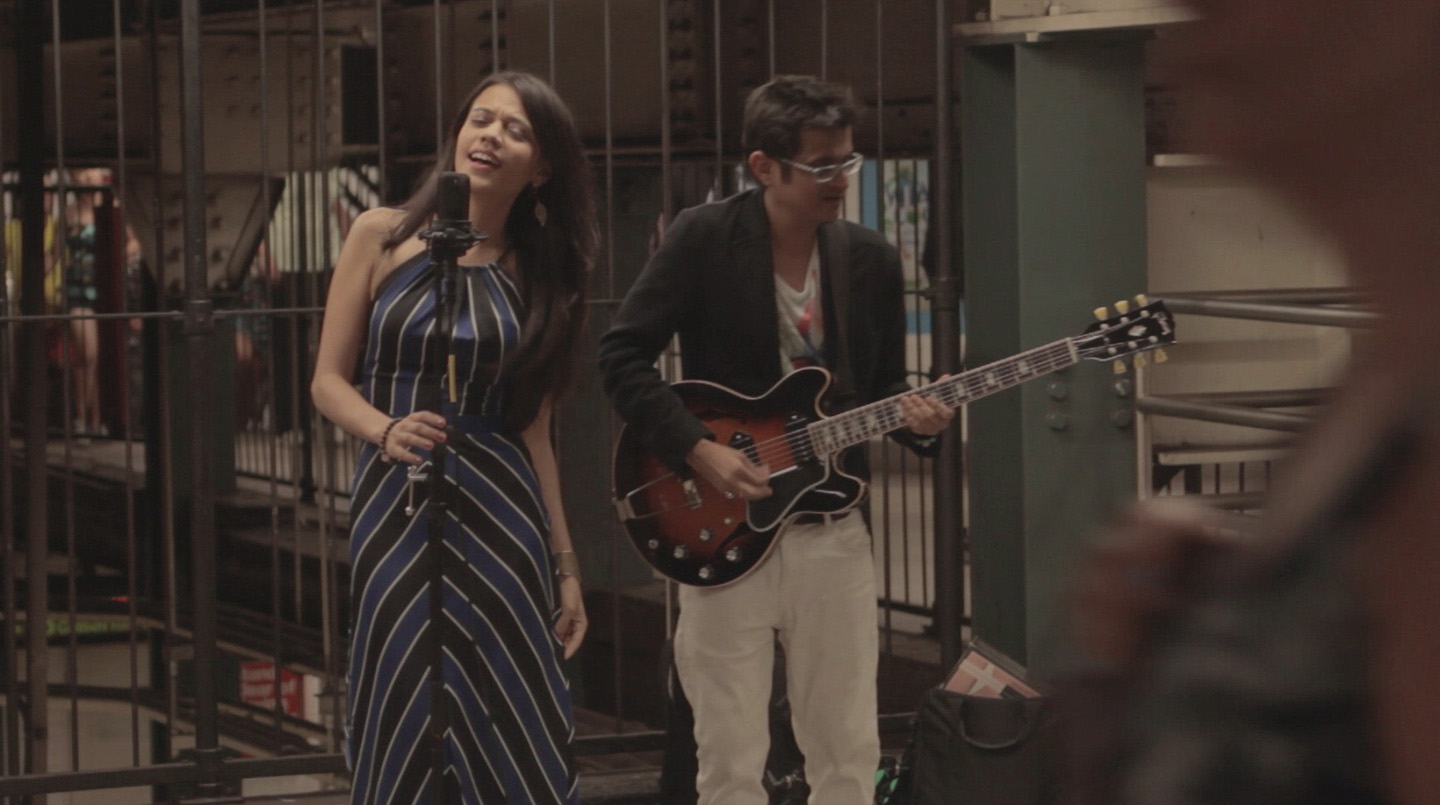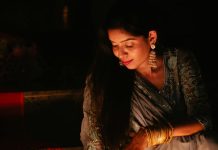With the advent of Indian fusion music taking over the music scene in the country, we are more than thrilled about this advancement. Madhura Sansare gets on with the new trend to tell you all there is to know about Indian fusion music
Globalisation is the norm of today’s times. Apart from taking over our digital lives, it is also slowly advancing upon the music industry. And we could not be happier about this change. Almost on the verge of extinction, Indian classical music is making a sure shot comeback with many young musicians taking it over and mixing it up with a variety of more popular genres of music and creating some fabulous Indian fusion numbers for younger audiences.
World music is a musical category encompassing many different styles of music from around the globe, which includes many genres of non-Western music including folk music, ethnic music, traditional music, indigenous music, neotraditional music, and music where more than one cultural tradition, such as when ethnic music and Western popular music intermingle. World music’s inclusive nature and elasticity as a musical category pose obstacles to a universal definition, but its ethic of interest in the culturally exotic is encapsulated in Roots magazine’s description of the genre as “local music from out there”.The term was popularized in the 1980s as a marketing category for non-Western traditional music. Globalization has facilitated the expansion of world music’s audiences and scope. It has grown to include hybrid subgenres such as world fusion, global fusion, ethnic fusionand worldbeat.
Fusion is not a very old trend in Indian music. Fusion trend is said to have begun with Ali Akbar Khan’s 1955 performance in the United States. Indian fusion music came into being with rock and roll fusions with Indian music in the 1960s and 1970s. But it was limited to Europe and Europe and North America. For some time the stage of Indian fusion music was taken by Pt Ravi Shankar, the Sitar maestro.
Pt Ravi Shankar began fusing jazz with Indian traditions along with Bud Shank, a jazz musician. Soon the trend was imitated by many popular European and American music exponents. In the year 1965, George Harrison played the song, “Norwegian wood” on the Sitar. Another famous Jazz expert, Miles Davis recorded and performed with the likes of Khalil Bal Krishna, Bihari Sharma, and Badal Roy. Some other prominent Western artists like the Grateful Dead, Incredible String Band, the Rolling Stones, the Move and Traffic soon integrated Indian influences and instruments and developed the trend of fusion.
The Mahavishnu Orchestra of John McLaughlin pursued fusion with great integrity and authenticity in the mid-1970s. In the process John joined forces with L. Shankar, Zakir Hussain and others. The trend of fusion took over the Indian-British artists in the late 1980s, who fused Indian and Western traditions. In the new millennium, a new trend of fusing Indian Film and Bhangra music has started in America. Many of the mainstream artists have taken inspiration from Bollywood movies and worked with Indian artists.
Known for incorporating Indian classical tunes into theme songs of some of the most popular western
TV shows and movies to come up with an almost ethereal musical arrangement, The Indian Jam
Project has been recognised by legends like Michael Price and Mark Gatiss. We talk to the founder
and arranger of this conceptually revolutionary band, Tushar Lal, about his journey so far.
How did you come up with the idea for the Indian Jam Project?
I always wanted to incorporate Indian techniques of composition into western pieces. I have been influenced by both since I was a kid, so it wasn’t too hard for me to start with something like the Indian Jam Project. Game of Thrones was one of my favourite TV series and I loved its theme song, so I started off with that.
Why did you choose the Indian Jam Project as your name?
Haha! It’s not the best name! Actually, Michael Price tweeted about the Game of Thrones video, thinking Indian Jam is the name of the band, while it was meant to be interpreted like it’s a ‘jam session’. But then we kind of got famous with the name, so Indian Jam Project it was!
What were some of the challenges you faced?
For me, one of the major challenges is definitely writing the arrangement – writing parts for all the instruments which are supposed to be put together as an Indianised arrangement. Because I need to think with a different perspective to put it all together!
Otherwise for all of us, performing live is also challenging, but also a lot of fun!
Which has been your most popular composition till date?
Definitely, the Harry Potter Music Tribute
What, according to you is the future of Indian music and international music?
International music seems to be doing pretty great, but Indian Classical music definitely needs to be respected more than it is right now. The saddest part is, Indian Classical music has received tremendous love and response from all over the world but not so much from our own country. We went too Bollywood and forgot that we own something so brilliant. And to make things worse, bad EDM is stepping in. I can’t compare music and call a particular genre better, but Indian Classical music definitely needs to be out there more than it is right now.
Why did you choose to showcase fusion music with the theme songs of popular western TV series and movies specifically?
Composition wise they are quite good, with just the right amount of complexity and they’ve got a catchy element because they need to be showcased on television. Seemed like a pretty good option.
Do you perform live on stage as well? Where can we catch you next?
Yes! We’re performing at Mood Indigo, IIT Mumbai this December. Michael Price, Mark Gatiss and Karsh Kale’s have shown appreciation
for your work. How did it happen? What was your reaction?
It was very, very overwhelming. All the members were extremely happy. These are some pretty big musicians and producers. We couldn’t believe it! It encouraged all of us even more to go further with this project.
We get in conversation with Maati Baani, a world music band formed by Kartik Shah and Nirali
Kartik which routinely collaborates with musicians from all over the world to create some fantastically
cultural music videos.
How did you come up with the idea for the Maati Baani?
Maati Baani literally means “The language of earth”. As musicians we did not want to keep the compositions to ourselves. It is our love for different music from various cultures and lands that brought us together. We always wanted our music to be collaborative and not limited to any one genre. It gives us an opportunity to explore world music and sounds that are still rooted in tradition. The core idea behind Maati Baani is to keep Indian Classical music as a protagonist among various other sounds, cultures, languages and voices of the world.
What were some of the challenges you faced?
As interesting as it is, collaborating with different artists around the globe is not at all an easy task. Even once the artist has expressed full enthusiasm, sometimes it doesn’t work out because their schedules might be busy during the timeframe in which we need their material. Once they are on board, another challenge is to match their schedules and timelines with ours.
The other major challenge is that we have a huge database from the artists. Editing and shuffling their parts to blend it in and make it sound effortless can be termed as a challenge but in the end, this is what we strive to achieve and overcoming these challenges is what we enjoy the most.
What, according to you is the future of Indian and international music?
In these times of turmoil, music is a healing touch. Today, the power of technology has opened more doors, connecting some immensely talented musicians to co-create music. What seemed impossible a few years ago has now become possible! MaatiBaani’s new series is one good example where we have co-created music through technology.
Can you tell us a little more about your new music season?
Our new series is one of a kind. We are taking global music to another level and coming up with a digital musical series done entirely through online collaboration. It features more than 70 artists across 20 countries. The 1st season is set to be released in Dec, 2015 and we are working with the post-production for the same, setting minor details in place and assembling the songs. We bet it’ll be worth the wait.
Which were some of the most exciting collaborations for you personally?
It has to be Rang Rangiya which was an Indo-Pak collaboration released on the Independence Day of both the nations in 2014. Historically, we were a same country and we still are, only separated by borders. India and Pakistan has always shared a strained relationship, so what could have been better than a musical offering of love, peace and friendship.We believe, music is the most celebrated art form all over the world so why not use it for the greater good.

The Father-Son Percussionist Duo
Legendary percussionist Taufiq Qureshi and his son Shikhar Naad talk to us about their love for percussion and the legacy of their prestigious family.
Son to the legendary Ustab Alla Rakha and brother to Ustad Zakir Hussain, Taufiq Qureshi can certainly be called the pioneer of djembe in India. Being rooted in his background of Indian classical music, he diversified completely by introducing the African instrument to India and opening up the Indian audiences, even the non-tabla listeners, to his father’s incomparable legacy. He is now passing on his own legacy to his son, Shikhar Naad, who is an exceptional djembe player himself. We talk to this inspirational father-son duo about their exceptional heritage and their love for percussion.
It has been a long career for you, Mr. Qureshi. What would you say are your favourite highlights of your journey so far?
One of the highlights of my journey was the release of RHYDHUN in 2000 which was a landmark album for me because it pivoted me right top there among some well known percussionists in the world. Apart from the many concerts I did through my career, the first time I did my Djembe solo, which is an African instrument on which I defined the repertoire of all my father’s knowledge of the tabla. The first time I performed such a solo was in 2009 at the Shyamukananda Hall, where I played in front of a stalwart of artists. It was a defining point in my career. Another highlight was during one of my visits to the U.S when I was playing the djembe and after my performance a lot of percussionists who were djembe and congo players came up to me and appreciated my work and asked me about the technique I was using.
How did you come up with the idea for Mumbai Stamp?
When I was returning back from one of my visits to Singapore, on my way home I got the strong stench that Mumbai offers and saw the garbage filled roads. I went back to my students and asked them to go to their area, collect any garbage cans that produce sound and make music. At that time I was working on my album called Bombay Fever and I wanted to do something that would showcase the spirit of Mumbai which I composed using all the kachra we collected in the studio and that’s how Mumbai Stamp was born in 2006. The main aspect of Mumbai Stamp is to work on trash which is not bought but collected.
Mr. Naad, what according to you is the best thing about performing with your father?
The best thing about working with my father is that there’s always something new to learn, something new to experience and look forward to and that’s something you don’t get with many people. There aren’t many challenges as such, but I always try to please him and hope that he likes my work. It’s not at all stressful as he lets his students be what they want to and he lets us experiment so there’s no pressure.
What can we look forward to in the future from the two of you as a father-son duo?
We are focusing on releasing an album solely on our djembe playing, with the repertoire of the tabla. We will continue performing live as well.
Volume 5 Issue 6































